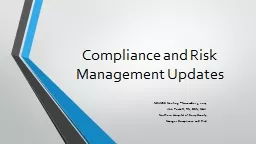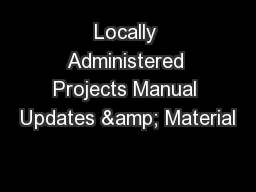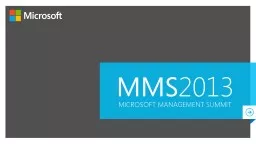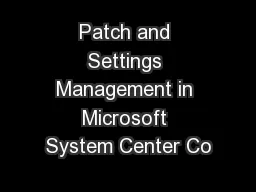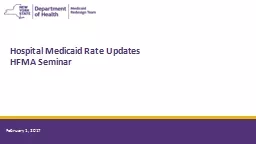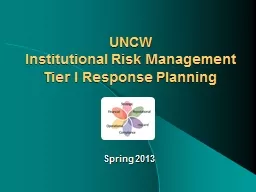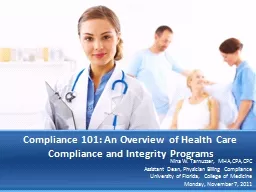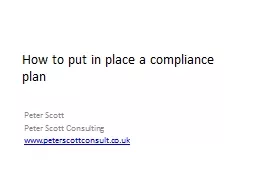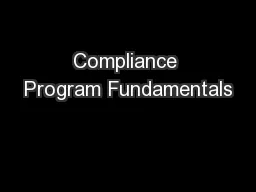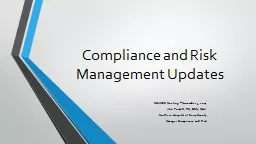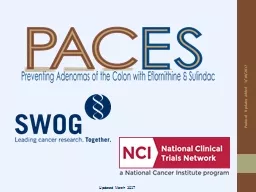PPT-Compliance and Risk Management Updates
Author : liane-varnes | Published Date : 2020-01-05
Compliance and Risk Management Updates NCAMSS Meeting November 3 2017 JILL Puckett RN BSN MHA Northern Hospital of Surry County Manager Compliance and Risk Objectives
Presentation Embed Code
Download Presentation
Download Presentation The PPT/PDF document "Compliance and Risk Management Updates" is the property of its rightful owner. Permission is granted to download and print the materials on this website for personal, non-commercial use only, and to display it on your personal computer provided you do not modify the materials and that you retain all copyright notices contained in the materials. By downloading content from our website, you accept the terms of this agreement.
Compliance and Risk Management Updates: Transcript
Download Rules Of Document
"Compliance and Risk Management Updates"The content belongs to its owner. You may download and print it for personal use, without modification, and keep all copyright notices. By downloading, you agree to these terms.
Related Documents

